Education
1979 Ph. D. Biology; 1971 M. A. Marine Science; 1968 B. A. Zoology, University of South Florida, USA.
Professional Career
Starting as a laboratory technician for the Florida Board of Conservation in 1963, by 1978 she had risen to Laboratory Supervisor and in 1980 Dr. Steidinger became Bureau Chief of Florida's DNR Marine Science and Technology with responsibilities for the marine research laboratory, the Department's shellfish program, and for field offices around the state. The lab then became the Bureau of Marine Research and kept that name until 1988 when it was changed to the Florida Marine Research Institute. In this leadership capacity, Karen oversaw 183 full-time staff and over 100 part-time staff at a central laboratory and 6 field laboratories, while managing a $13 million dollar budget. 1n 1993, she went back to research full-time working on federal and state-funded Harmful Algal Bloom projects. She semi-retired in 2003 and went back to work full-time in 2005 with the Florida Institute of Oceanography, University of South Florida, St. Petersburg as a contract worker, principally assigned to the Fish and Wildlife Research Institute, Florida Fish and Wildlife Conservation Commission.
Honours
2008 Yasumoto Lifetime Achievement Award by the International Society for the Study of Harmful Algae (ISSHA); 2008 Individual Gulf Guardian Award (EPA Gulf of Mexico Program Office); 2003 Lifetime Achievement Award by the Phycological Society of America; 2002 host of 10th International Conference on Harmful Algae in St. Petersburg (Florida, USA); 2001 Louise Ireland Humphrey Award by Wildlife Foundation of Florida. In 2003 the 250-seat auditorium of the Florida Fish & Wildlife Research Institute was named in her honor; Etymology of the dinoflagellate genus Karenia, Lissodinium steidingerae, Testeria (Protoperidinium) steidingerae.
Key contributions
Dr. Steidinger's contributions to phycology and oceanography span four decades. Her research on the systematics, ecology, and oceanography of the Florida red-tide dinoflagellate, Karenia brevis is legendary for its insights and impact. Her impact to the HAB field can be traced from the first red tide conference (Boston, 1975) when she put forward the concept of sequential bloom phases for red tides - initiation, growth, maintenance (plateau), and transport. Within this seminal presentation, she discussed the life cycle and emphasized the importance of physical/chemical forcing for constraining the dispersion of harmful algal blooms, particularly Florida red tides. Karen’s work with Linda Walker documented the full life cycle of a toxic dinoflagellate for the first time (specifically, gamete formation within the vegetative cell to meiosis and production of the chain of four vegetative cells in Alexandrium monilatum). More recently her work on small armored heterotrophic dinoflagellates, e.g. Pfiesteria, Cryptoperidiniopsis, Luciella and others, has pointed out the use of electron microscopy in detailing what was previously thought of as “gymnodinioids”.
Dr. Steidinger’s intellectual curiosity and tireless involvement with academic colleagues, federal/state agency programs and scientific societies have led to her international prominence. Her kindness, respect and understanding when dealing with colleagues have been her hallmark. Throughout her career, she has freely mentored and trained both ‘young’ and ‘old’ scientists (notably as a teacher at the International Advanced Phytoplankton Courses), so that they may experience the same love for science that she does!
Notable collaborators
Dan Baden, Allison Haywood, Jan Landsberg, Pat Tester, Carmelo Tomas.
10 Key publications
Steidinger, K.A., J. Landsberg, P. Mason, W. Vogelbein, P. Tester and W. Litaker. 2006. Cryptoperidiniopsis brodyi gen. et sp. nov. (Dinophyceae), a small lightly armored dinoflagellate in the Pfiesteriaceae, Journal of Phycology 42, 951–961.
Steidinger, K.A., J. Landsberg, R.W. Richardson, E. Truby, B. Blakesley, P. Scott, P. Tester, T. Tengs, P. Mason, S. Morton, D. Seaborn, W. Litaker, K. Reece, D. Oldach, L. Haas and G. Vasta. 2001. Classification and identification of Pfiesteria and Pfiesteria-like species. Environmental Health Perspectives 109, 661–665.
Steidinger, K.A., J.M. Burkholder, H.B. Glasgow, C.W. Hobbs Jr., J.K. Garrett, E.W. Truby, E.J. Noga and S.A. Smith. 1996. Pfiesteria piscicida gen. et sp. nov. (Pfiesteriaceae fam. nov.), a new toxic dinoflagellate with a complex life cycle and behavior, Journal of Phycology 32, 157–164.
Steidinger, K.A. & K. Tangen, 1996. Dinoflagellates. In: C.R. Tomas, Editor, Identifying Marine Phytoplankton, Academic Press, San Diego, pp. 387–584.
Steidinger, K.A. & D.G. Baden, 1984. Toxic marine dinoflagellates. In: D.L. Spector (ed.), Dinoflagellates, Academy Press, NY, pp. 201–261.
Steidinger, K.A.,1983. A re-evaluation of toxic dinoflagellate biology and ecology. In: Round, F.E., Chapman, D. (Eds.), Progress in Phycological Research, vol. 2. Elsevier, North Holland, Amsterdam, pp. 147–188.
Steidinger, K.A., L.S. Tester and F.J.R. Taylor 1980. A redescription of Pyrodinium bahamense var. compressa (Bohm) stat. novo from Pacific red tides, Phycologia 19, 329–334.
L.M. Walker & K.A. Steidinger. 1979. Sexual Reproduction in the toxic dinoflagellate, Gonyaulax monilata, J Phycol. 15, 312–315.
Steidinger, K.A. 1975. Implications of dinoflagellate life cycles on initiation of Gymnodinium breve red tides, Environmental Letters 9, 129–139.
Steidinger, K.A. 1971. Gonyaulax balechi sp. nov. (Dinophyceae) with a discussion of the genera Gonyaulax and Heteraulacus, Phycologia 10, 183–187.
(Based partly on: Tester, P.A. & D.F. Millie. 2008. Dedication to Dr. Karen A. Steidinger. Continental Shelf Research 28-3-10.)

